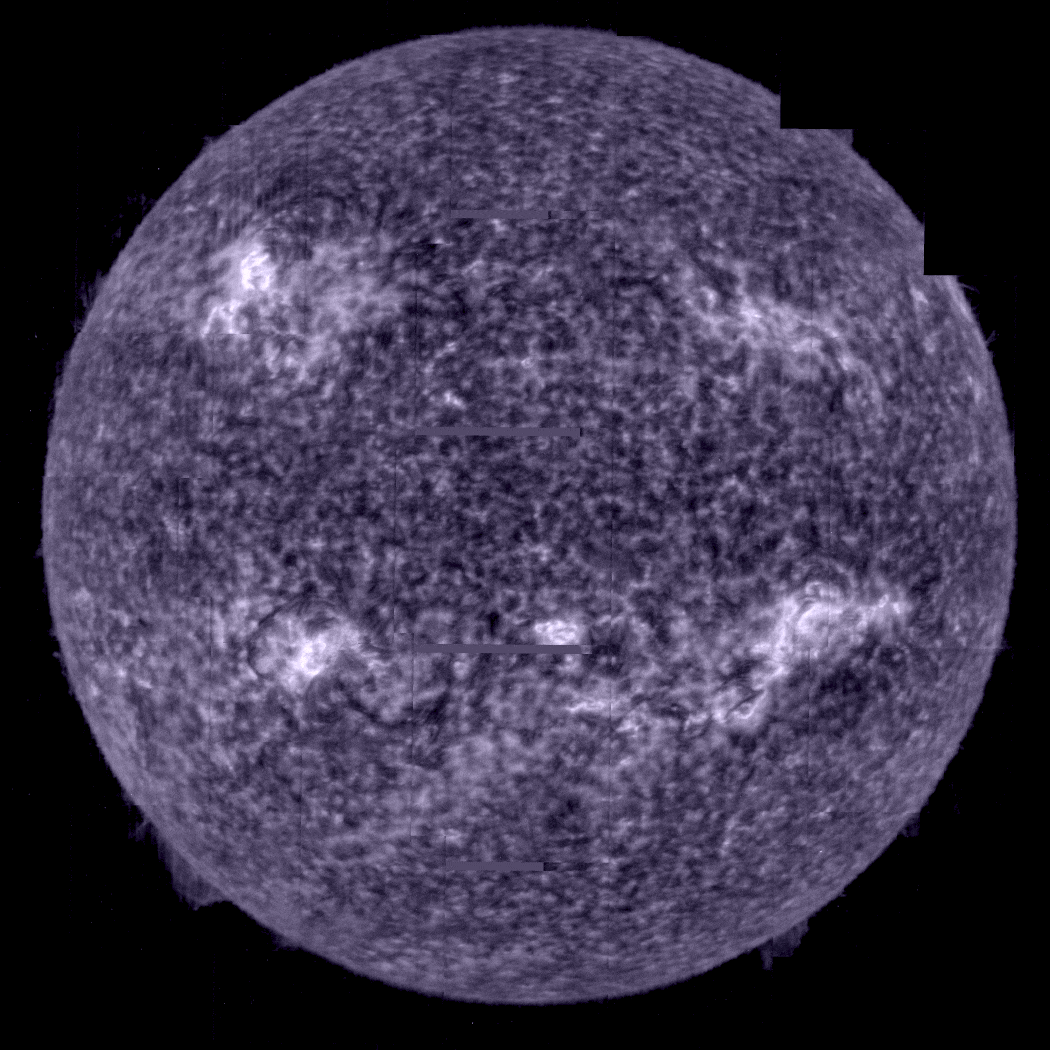The European Space Agency’s Solar Orbiter snaps an amazing image, en route to its first close pass near the Sun.
You’ve never seen the Sun like this. Earlier this month, the European Space Agency’s Solar Orbiter captured an amazing view of our host star.
The images were snapped on March 7th, as Solar Orbiter passed directly between the Earth and the Sun. There was an explicit reason for this, as the science team wanted to calibrate and compare the images with Earth-based and missions in Earth orbit, to include the Inouye solar observatory, NASA’s Solar Dynamics Observatory and the joint ESA/NASA Solar Heliospheric Observatory (SOHO), located at the Lagrange (L1) Sun-Earth point.
“From this point on-wards, we are ‘entering the unknown,’ as far as Solar Orbiter’s observations of the Sun are concerned,” says Solar Orbiter Project Scientist Daniel Müller in a recent press release.
The instruments used aboard the spacecraft included the Extreme Ultraviolet Imager (EUI) and the Spectral Imaging of the Coronal Environment (SPICE) imager. The EUI image alone represents the highest full disk resolution image of the Sun, looking right down through and capturing the corona and outer solar atmosphere. It’s definitely worth a scroll through and zoom in:

The full disk SPICE image captures the Sun at the Lyman-beta wavelength in the ultraviolet, and represents one of the first images of its kind taken in 50 years, since the solar observation experiments aboard Skylab.
Solar Orbiter snapped these images over a 4-hour session, while the probe was 75 million kilometers from the Sun, interior to the orbit of Venus. The Sun was large enough (two degrees across) from that distance that EUI needed a mosaic of 25 images to cover the entire disc of the Sun. The final result is laid out in a 9148 by 9112 grid of 83 million pixels, with a resolution 10 times better than your 4K TV screen.
The image includes filaments, nano-flares and spicules seen across the roiling surface of the Sun. Solar Orbiter observations will address the key question of how eruptions are born on the surface of the Sun, by characterizing the temperature of the Sun seen through successive layers.
You’d think that the Sun gets cooler, out through successive layers farther out… but the reverse is actually the case, as the outer corona reaches a million degrees versus the surface of the photosphere, at a relatively cool 5,000 degrees Celsius.

The SPICE sequence in particular shows temperature layers in color versus elemental composition: yellow (neon) at 630,000 degrees Celsius, green (oxygen) at 320,000 degrees Celsius, blue (carbon) 32,000 degrees Celsius, and purple (hydrogen) at a ‘cool’ 10,000 degrees Celsius.

Launched on February 10th, 2020 atop an Atlas V rocket from Cape Canaveral Space Force (at the time, Air Force) Station, Solar Orbiter has a primary seven year mission to study the Sun. The mission comes at an auspicious time, as Solar Cycle 25 gets underway in earnest this year, en route to its peak around 2025, which may be one of the most powerful in decades.

Solar Orbiter just reached its closest perihelion yet this past weekend, passing 50 million kilometers from the Sun interior to the orbit of Mercury. Passages near Venus will gradually change the inclination of Solar Orbiter’s path, gradually giving us views of the elusive polar regions of the Sun.
Get set for more great science, courtesy of Solar Orbiter.
Lead image credit: An artist’s conception of the Solar Orbiter mission. Credit: ESA.
The post ESA’s Solar Orbiter Takes a Ludicrously High Resolution Image of the Sun appeared first on Universe Today.
No comments:
Post a Comment